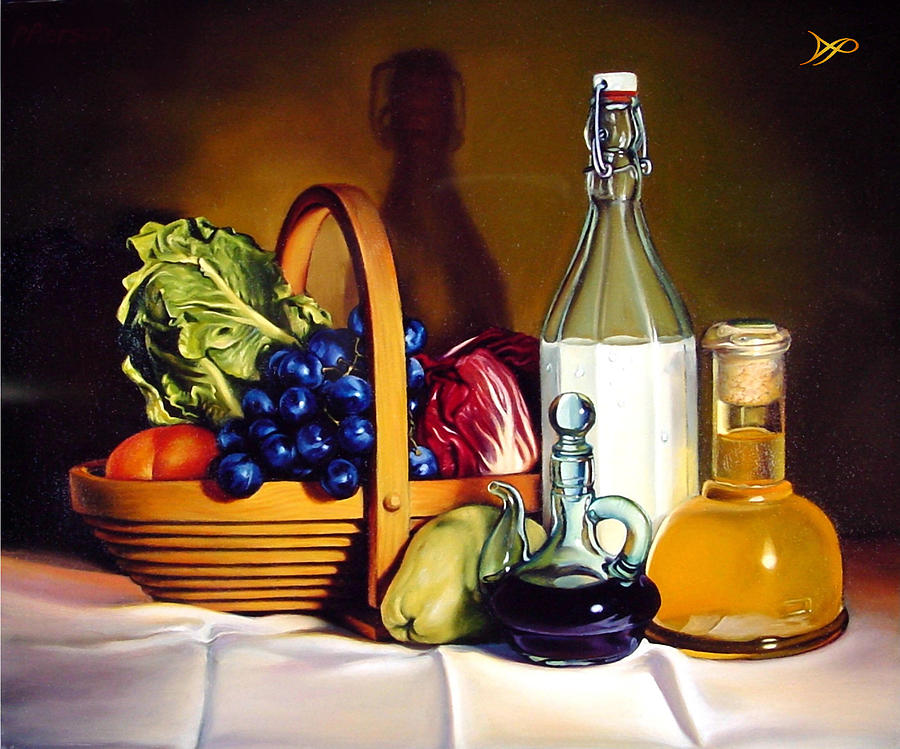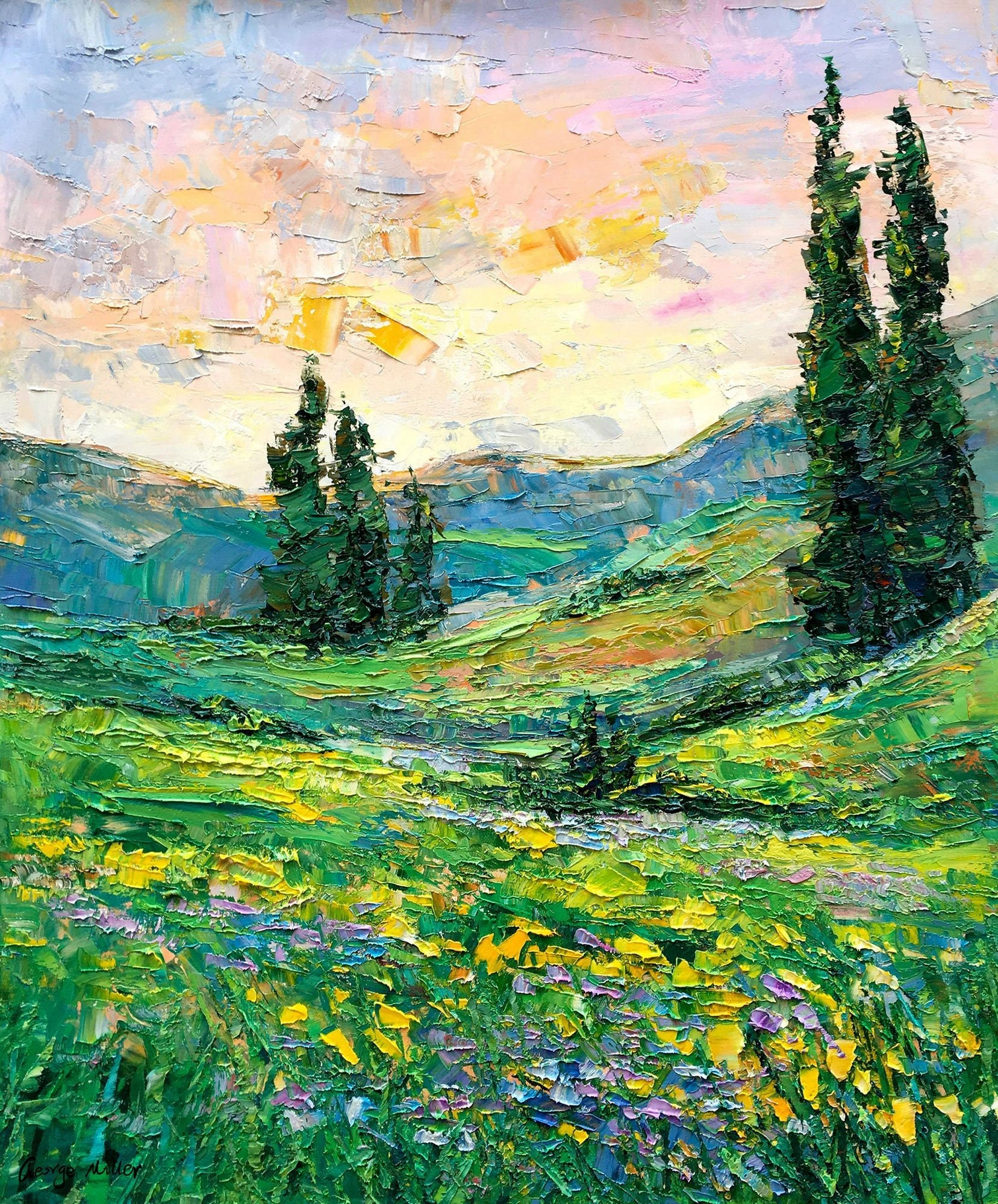Reasonably Priced Contemporary and Traditional Oil Paintings for Sale
Reasonably Priced Contemporary and Traditional Oil Paintings for Sale
Blog Article
Checking out All Concerning Oil Paints: An Overview to Understanding Their Beauty and Value
Oil paintings have actually mesmerized audiences for centuries, providing a glimpse into the artistic mastery of different eras. Their rich history is intertwined with ingenious strategies and profound emotional expression. Comprehending the materials and approaches behind these art work can improve recognition. In addition, the marketplace for oil paints presents chances for investors and enthusiasts alike. As one explores this fascinating globe, the concern emerges: what makes an oil paint really valuable?
The Background of Oil Paint: A Journey With Time
Although oil painting has origins that go back to old times, it absolutely grew throughout the Renaissance, when musicians uncovered its versatility and abundant color potential. Early examples can be mapped to the 7th century, with strategies developing notably throughout societies. The medium ended up being famous in Northern Europe in the 15th century, specifically through the works of artists like Jan van Eyck, that originated its usage for thorough realistic look and vivid hues. This period marked a separation from tempera paints, permitting greater depth and texture. As oil painting spread, it affected plenty of artists, causing work of arts by prominent figures such as Leonardo da Vinci and Rembrandt. The tool's heritage proceeds, shaping the art globe well into contemporary times.
Recognizing Oil Paints: Products and Techniques
As musicians discover the world of oil paints, they run into a varied selection of materials and methods that define this tool. The key parts of oil paint consist of pigments, which supply shade, and drying out oils, such as linseed, that bind the pigments and promote application. Various additives can change the paint's structure and drying time, boosting convenience. Methods like glazing, where clear layers are accumulated, and impasto, which involves applying thick paint, permit different aesthetic results. Additionally, using brushes, combination knives, and even fingers can produce distinct textures and finishes. Comprehending these materials and methods makes it possible for musicians to fully express their imagination and attain the preferred effect in their art work.
The Duty of Shade in Oil Paints
Shade plays a critical role in oil paints, influencing both aesthetic appeal and emotional resonance. Comprehending shade theory essentials, including the relationships between colors, can boost an artist's capability to communicate state of mind and ambience. In addition, understanding color mixing strategies enables higher depth and richness in a paint's combination.

Shade Concept Basics
Comprehending shade concept is vital for musicians collaborating with oil paints, as it creates the foundation for creating aesthetically appealing and harmonious structures. Color concept incorporates the research of how shades communicate, the color wheel, and the relationships in between primary, secondary, and tertiary shades. Artists use complementary shades to improve contrasts and create focal points, while similar colors promote unity and cohesiveness within a piece. Furthermore, the concepts of trendy and cozy shades affect the understanding of depth and space in a painting. Realizing these concepts enables musicians to manipulate color efficiently, directing the viewer's eye and connecting their desired message. Mastery of shade concept inevitably improves a musician's capability to share emotions and concepts with their work.
Emotional Influence of Color
The emotional effect of shade in oil paintings plays a critical function in just how visitors perceive and link with artwork. Colors stimulate details feelings and state of minds, influencing the audience's emotion. For instance, cozy shades like reds and oranges can produce a feeling of warmth and power, while great tones such as blues and environment-friendlies typically evoke calmness or self-questioning. Artists strategically choose color schemes to boost narrative aspects, guiding the target market's emotional journey. The saturation and comparison of shades even more intensify these impacts, attracting attention and producing emphasis. Ultimately, the interplay of shades in oil paintings not just boosts their aesthetic appeal but additionally works as an effective medium for emotional expression, enriching the visitor's experience and analysis.
Color Combining Techniques
While many facets of oil paint add to the overall composition, grasping shade mixing techniques is crucial for attaining wanted effects and depth. Shade mixing can be come close to with different approaches, consisting of the additive and subtractive processes. Additive blending involves combining shades of light, while subtractive mixing counts on pigments, where shades blend to develop brand-new tones. Artists typically use a limited scheme to produce unified jobs, understanding the connections in between primary, secondary, and tertiary colors. Methods such as glazing and scumbling additionally boost depth and luminosity. By skillfully mixing colors, an artist can stimulate feelings, create prime focus, and accomplish a feeling of realistic look, eventually raising the paint's psychological and visual influence.
Famous Oil Painters and Their Iconic Works

Famous for their mastery of color and strategy, oil painters have developed several of the most well known art work in history. Distinguished artists like Vincent van Gogh mesmerized audiences with his emotive brushwork in "Starry Night," while Claude Monet's "Perception, Sunup" prepared for Impressionism. Leonardo da Vinci's "Mona Lisa" remains a long-lasting icon of imaginative genius, showcasing his skill in catching human expression. Rembrandt's "The Evening Watch" illustrates his cutting-edge use of light and darkness. Various other notable numbers include Pablo Picasso, that reinvented contemporary art with his bold experimentation in works like "Les Demoiselles d'Avignon," and Georgia O'Keeffe, whose vibrant depictions of blossoms and landscapes assisted specify American modernism. Each musician's one-of-a-kind design added substantially to the oil paint landscape.
How to Evaluate the Top Quality of an Oil Painting
Examining the high quality of an oil painting involves a cautious analysis of craftsmanship methods, as well as an analysis of shade and make-up. Observing brushwork, layering, and the application of paint can expose the musician's skill degree. Additionally, the interaction of shades and the general arrangement of aspects contribute significantly to the painting's aesthetic value.
Assessing Workmanship Strategies
A precise analysis of workmanship techniques is necessary for determining the top quality of an oil painting. Evaluators must initially analyze the application of paint; thick, textured brushstrokes may suggest a knowledgeable hand, while excessively consistent applications could suggest an absence of deepness. oil paintings for sale. The layering strategy is likewise vital; the existence of glazes and varied thickness can enhance luminosity and intricacy. Furthermore, the top quality of the products used, such as the canvas and pigments, plays a considerable role in resilience and general aesthetic. Focus to detail in components like edges and shifts between colors mirrors the musician's commitment to their craft. Ultimately, these strategies add to the paint's psychological impact and market value, working as indications of the musician's ability and intent
Examining Color and Make-up
While examining the high quality of an oil painting, one should concentrate on the interplay of color and make-up, as these elements are basic to the art work's general impact. Shade choices can evoke feelings and establish mood; therefore, the artist's palette should be taken a look at for consistency and contrast. A well-balanced composition directs the viewer's eye and develops a feeling of unity. Artists typically employ techniques like the rule of thirds or leading lines to enhance aesthetic passion. Additionally, the use of light and darkness can include deepness, boosting the three-dimensionality of the painting. Eventually, an effective oil paint weds shade and make-up, engaging the visitor and welcoming a much deeper recognition of the artist's vision and technique.
Caring for and Preserving Oil Paintings
Proper care and preservation of oil paints is essential for keeping their honesty and durability. To shield these artworks, it is crucial to display them away from direct sunshine, which can trigger fading and staining. Maintaining a steady environment with regulated temperature and moisture additional help in protecting against damages. Cleaning should be done delicately making use of a soft, dry fabric, avoiding any kind of extreme chemicals that could damage the paint or varnish. Regular inspections for indicators of wear and tear, such as breaking or flaking, are a good check here idea. When carrying or keeping oil paints, proper extra padding and framework are necessary to avoid physical injury. Inevitably, persistent care adds to the visual allure and worth of oil paints over time.
The Market for Oil Paints: Collecting and Investing
Understanding the market dynamics for oil paints is vital for financiers and collection agencies alike. The value of these art work is affected by various factors, including the artist's track record, historical importance, and existing trends. Enthusiasts usually look for pieces that reverberate directly while taking into consideration potential gratitude in value. Galleries and public auctions offer as key venues for trading, with prices rising and fall based upon need and rarity. Spending in oil paints needs study right into the marketplace, in addition to an understanding of authenticity and provenance. In addition, arising musicians might supply possibilities for considerable returns, while developed names can command high prices. Generally, a strategic technique to gathering can produce both visual pleasure and financial incentives.

Regularly Asked Concerns
What Are the Ecological Impacts of Oil Paint Materials?
The ecological impacts of oil painting products include the launch of unpredictable natural substances (VOCs), unsafe waste generation, and source removal for pigments. These variables contribute to contamination and eco-friendly destruction, elevating concerns among ecologically aware artists and consumers.
How Do Different Canvases Influence Oil Paint Results?
Different canvases affect oil painting results considerably. Surface, structure, and absorbency high quality can change paint application, drying out times, and shade vibrancy. Musicians typically choose certain canvases to attain wanted effects and enhance their imaginative expression.
Can Oil Paintings Be Brought Back if Harmed?
Oil paints can undoubtedly be brought back if harmed. Professional conservators use various methods to fix splits, tidy surfaces, and address discoloration, ensuring that the artwork retains its initial charm and worth for future generations.
What Are the Indicators of an Original Oil Painting?
The indicators of an initial oil paint consist of visible brush strokes, texture variants, and an irregular canvas weave (oil paintings for sale). Additionally, credibility may be validated with provenance, trademarks, and the existence of a varnish layer distinct to oil mediums
Just How Has Innovation Influenced Modern Oil Painting Techniques?
Innovation has substantially affected modern-day oil paint strategies by presenting electronic devices for planning, improved materials for appearance and longevity, and on the internet systems for offering and sharing art, consequently increasing musicians' creative possibilities and target market reach. Oil paint has roots that date back to old times, it genuinely grew throughout the Renaissance, when artists uncovered its adaptability and rich color capacity. The emotional impact of shade in oil paintings plays a vital role in exactly how customers view and link with artwork. While many elements of oil painting add to the general structure, grasping color blending methods is essential for achieving preferred results and depth. Assessing the high quality of an oil painting entails a cautious evaluation of craftsmanship techniques, as well as an evaluation of color and composition. While evaluating the high quality of an oil painting, one should concentrate on the interplay of shade and structure, as these elements are essential to the art work's general impact.
Report this page